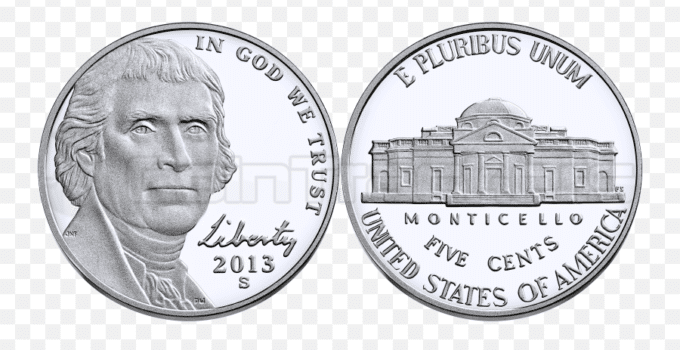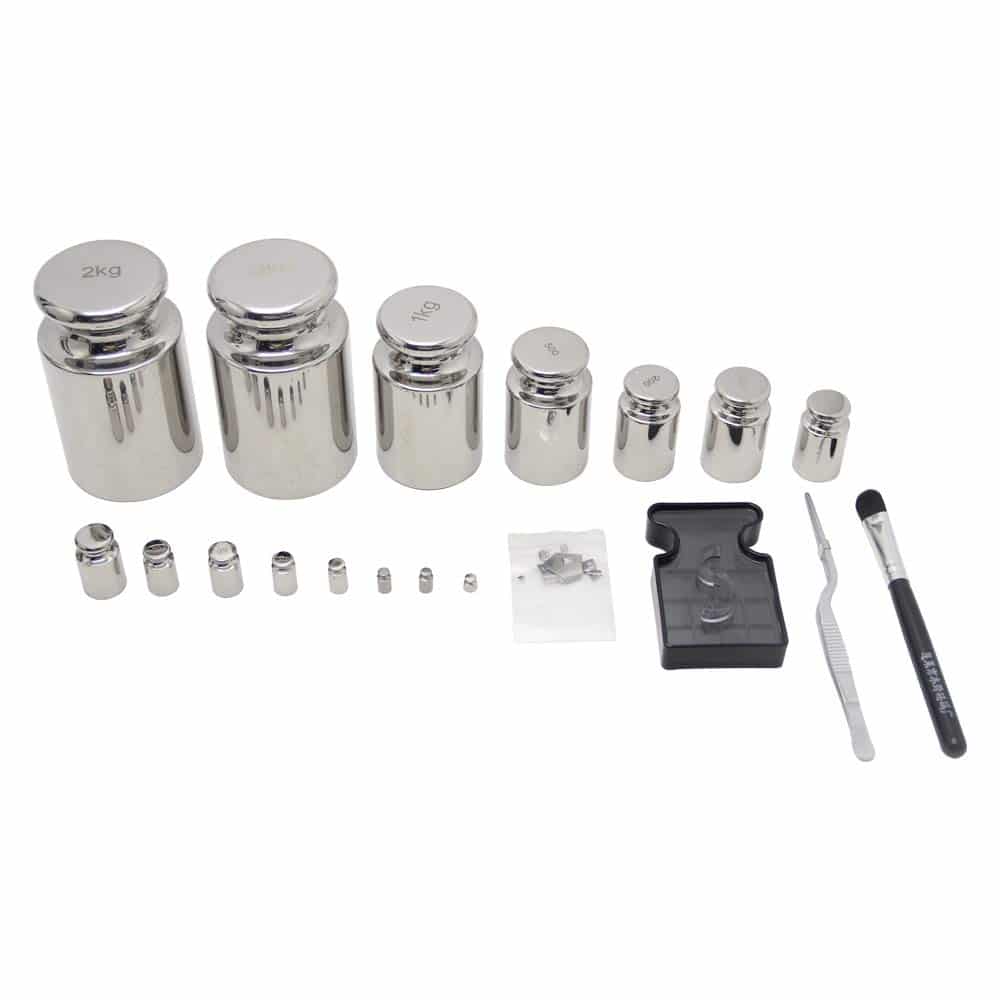Nickel a chemical element that has an atomic number of 28 and with the symbol Ni. It’s silvery-white radiant metal with a bit of golden tinge. This chemical element falls under the category of transition metals. It is also malleable and hard. Pure nickel, powdered to make the most of the reactive surface area, displays a considerable chemical activity. On the other hand, bigger pieces of nickel are slow to respond to air below standard conditions due to the oxide layer shapes on the surface, thus prevents corrosion. Pure nickel is found in Earth crust just in small amounts, normally in ultramafic rocks.
A United States nickel or a five-cent coin for non-Americans weighs precisely 5.00g, and a United States cent since the year 1983 has a weight of 2.50g. A 1981 United States cents and prior to the 3.11 grams. In the year 1982, solid bronze United States cents were substituted with a US copper-plated zinc cents.
Table of Contents
How much does a nickel weigh?
Perhaps, you are asking how much a nickel weigh does. This question is used to be one of the most significant coins or nickel questions one could ask. Keep on reading as we talked about nickel weigh, nickel weight in grams, digital scale, and ounces as well as on a scale. So, sit back, relax and keep on reading.
How much does a nickel weigh in grams?
How much does a nickel weigh when it comes to grams? Well, modern nickels weigh about 5.000 grams each. The Jefferson nickels or the so-called modern nickels were minted ever since 1938. The composition of this is 25 percent nickel and 75 percent copper. The US government issued a silver 35-percent “Jefferson War Nickels” from the year 1942-1945, but these still weigh 5 grams.
There are other types of nickels before minting Jefferson’s nickels, like the Buffalo nickel, Washington Nickel, Shield nickel, and Liberty Head V nickel. Every nickel also has 5 grams weight. The first types of nickels weigh less than five grams. The half disme was the earliest nickel ever made generated in the year 1792 and only weighed 1.2 g. The next nickel that appears is the Flowing Hair half dime, which weighs 1.34g. Next is the Capped Bust and “Draped Bust” half dime series, and each weighs 1.35g. Early in the year 1837, until Coinage Act, nickels went in some changes. As a result, the weights were inconsistent. Like for instance, the 1837 Seated Liberty was minted and weighed 1.34g. In the year 1853, the weight of this coin was modified to 1.24g. This coin continues to be stamped and weighs 1.24 g until it lasted in the year 1873.
How much does a nickel weigh on a digital scale?
To know the weight of a nickel on a digital scale, ensure to utilize a new coin. A US nickel (five-cent coin) weighs precisely 5.00g (for non-Americans), and a US cent weighs precisely 2.50 grams.
Subsequently, you may ask, how much a gram weighs on a digital scale? A gram has an equivalent of 0.0357 ounces. If you weigh a tiny paperclip, you would know that it weighs approximately 1g. On the other hand, if you were to measure the weight of nickel in ounces and wished to make a fast conversion of which weight into grams, it is vital to keep in mind that 1oz is equivalent to 28.35g.
How do you calibrate your digital scale?
Keep on reading to know the steps:
Put the digital scale on a level and sturdy surface.
Put 1 or 2 computer mouse pads on the surface of the table.
Put the scale on the mouse pad and then switch it on.
Put the Tare or Zero button on the digital scale.
Verify the digital scale is set to a calibration mode.
So, keeping this thing in mind, how much a nickel weighs on a digital scale? Here is the information you need.
All 1 cent pieces or US pennies minted since the year 1892 have a weight of 2.5g or 0.088oz or 3.11g or 0.109. The Lincoln nickel weighs 2.5g, and it is composed of brass, 5 percent zinc, and 95 percent copper, while the Union Shield weighs 3.11 grams and is composed of copper-plated zinc, 2.5 percent copper, and 97.5 percent zinc.
Are all nickels available weighs five grams?
All nickels from the US or (5 cent pieces) which are minted since the year 1965 weigh 0.176oz or 5.000g. These nickels have a thickness of 1.95mm and have a diameter of 21.21mm. This is composed of 75 percent copper and 25 percent nickel. The government of the US initially proposed a nickel in the 1972 Coinage Act.
How much does a nickel weigh in ounces?
Do you want to know how much a nickel weigh in ounces does? Well, this article is for you. In this section, we will discuss the exact of nickel in ounces.
All five-cent pieces or nickels that were minted since the year 1965 have a weight of 0.176 ounces. US nickels have 1,95 thicknesses and 21.21mm diameter and are composed of 25 percent nickel and 75 percent copper.
The United States government initially recommended s nickel in the 1972 Coinage Act.
The original nickel is called half disme that weighs 0.042oz. It was struck with 10.75 percent copper and 89.25 percent silver. From the year 1796 up to 1803, the United States minted the nickel ( Draped Bust half dime that improved the weight to o.047 ounces. And in the year 1829, the government issues the Capped Bust nickel that lessened the weight to 0.042 ounces. From the year 1837 to the 1873 Coinage Act, the content was modified to 90 percent silver, 10 percent copper, and the weight differs from 0.047 ounces to 0.043 ounces. From the year 1866 up to the year 1883, the United States also issued five-cent pieces of Shield nickel, which utilized 25 percent nickel and 75 percent copper as silver was harder to come during the Civil War.
The weight of the nickel was upped to 0.176 ounces, and following the war, the weight stayed at 0.176 ounces, despite the fact that the metallic composition was standardized to the nickel and copper mixture.
How much does a nickel weigh on a scale?
One of the questions that come up to the mind of everyone once they hear about nickel is its weight on a scale. We will give you the exact answer to how much does a nickel weighs on a scale. So, here it is.
A US nickel has 5.0 grams nominal weight.
The weight of the five-cent coin might differ not over 0.194grams is the precise language of the existing US code 5113. In spite of how this language is interpreted, nickel isn’t a appropriate calibration weight; however, it can be utilized for rough test weights.
It is not clear if the 0,194g stated in former years as 3.0 grains is an a+ variance or a complete allowable variance envelope from the nominal weight of 5g.
In any case, nickel on a well-calibrated scale could weigh 4.9g up to 5.1g or 4.8g to 5.2g; it all depends on how the rule of languages is interpreted. The former is typical.
According to empirical trial utilizing ten groups of the clean, random year, nickel is superb condition is as follows:
Mean weight = 49.905g with a standard divergence of 0.165 g. Thus, 99.7 percent of the time, ten nickels on the pan must weigh 49.4g to 50.4g that isn’t precise enough to be utilized as a 50g calibration weight. On the other hand, it will suffice to make sure that a scale is within reasonable calibration for a lot of hobby applications.
There is a relatively uncommon rumor that encourages utilizing nickel in calibrating a scale. According to experts, a nickel weighs precisely 5.0g.
The concept is that you are able to mix; however, a number of nickels are required in order to get to the capacity of the scale. Like for instance, for a 100g scale, you need twenty nickels. In actuality, the real weight of nickels fluctuates after it goes into circulation. The build-up or accumulation f the debris within the grooves and damages can affect the exact weight of the nickel that could increase to full gram disparities in the whole weight of a nickel.
The adjustment of the calibration is fixed or stable that why utilizing the right tools is vital. There are weight kits as well as calibration weights; all are professional quality as well as assure precise calibration.
Conclusion about How Much Does a Nickel Weigh?
The nickels inside your purse or in your changes weigh 5g. This is simply because nickels that have been issued at this moment are precisely 5grams. A lot of people utilize nickels in the calibration of the scales. You are able to place a nickel on the scale. Make sure to keep in mind the weight. Then, you are able to alter the scale down or up by the variation in weight.



